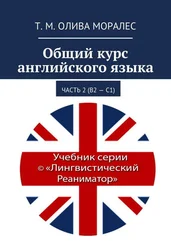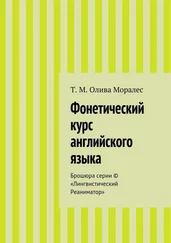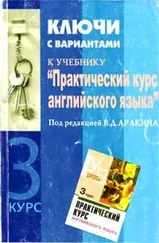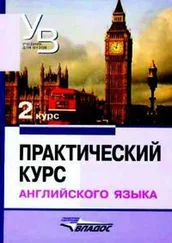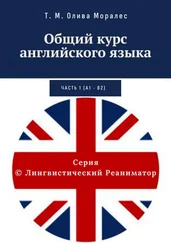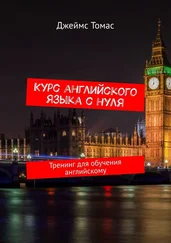Владимир Аракин - Практический курс английского языка 3 курс [calibre 2.43.0]
Здесь есть возможность читать онлайн «Владимир Аракин - Практический курс английского языка 3 курс [calibre 2.43.0]» весь текст электронной книги совершенно бесплатно (целиком полную версию без сокращений). В некоторых случаях можно слушать аудио, скачать через торрент в формате fb2 и присутствует краткое содержание. Год выпуска: 2006, Издательство: ВЛАДОС, Жанр: tbg_higher, на русском языке. Описание произведения, (предисловие) а так же отзывы посетителей доступны на портале библиотеки ЛибКат.
- Название:Практический курс английского языка 3 курс [calibre 2.43.0]
- Автор:
- Издательство:ВЛАДОС
- Жанр:
- Год:2006
- ISBN:нет данных
- Рейтинг книги:2.5 / 5. Голосов: 2
-
Избранное:Добавить в избранное
- Отзывы:
-
Ваша оценка:
- 60
- 1
- 2
- 3
- 4
- 5
Практический курс английского языка 3 курс [calibre 2.43.0]: краткое содержание, описание и аннотация
Предлагаем к чтению аннотацию, описание, краткое содержание или предисловие (зависит от того, что написал сам автор книги «Практический курс английского языка 3 курс [calibre 2.43.0]»). Если вы не нашли необходимую информацию о книге — напишите в комментариях, мы постараемся отыскать её.
I - V курсов педагогических вузов.
Цель учебника – обучение устной речи на основе развития необходимых автоматизированных речевых навыков, развитие техники чтения, а также навыков письменной речи.
Практический курс английского языка 3 курс [calibre 2.43.0] — читать онлайн бесплатно полную книгу (весь текст) целиком
Ниже представлен текст книги, разбитый по страницам. Система сохранения места последней прочитанной страницы, позволяет с удобством читать онлайн бесплатно книгу «Практический курс английского языка 3 курс [calibre 2.43.0]», без необходимости каждый раз заново искать на чём Вы остановились. Поставьте закладку, и сможете в любой момент перейти на страницу, на которой закончили чтение.
Интервал:
Закладка:
temporizers. Retell the texts according to the models you have listened to.
Thumbing a Lift
To hitchhike successfully in any country you must be able to do two things: attract attention and at the same time convince the driver at
a glance that you do not intend to rob or murder him. To fulfil the first requirement you must have some mark to distinguish you at once
from all other hitchhikers. A serviceman, for instance, should wear his uniform, a student his scarf. In a foreign country an unmistakable
indication of your own nationality will also arrest the driver's attention.
When I hitchhiked 9,500 miles across the United States and back recently I wore a well-tailored suit, a bowler hat and a trench-
coat, and carried a pencil-thin rolled black umbrella. My suitcase was decorated with British flags. Having plenty of luggage, moreover,
I was not likely to be suspected of being a dangerous lunatic. I then had to get across to the driver the idea that I was a bona fide
traveller, and needed to get somewhere cheaply.
But even with careful preparation, you must not assume that the task will be easy. You should be prepared to wait a little, for there
are drivers who confess to a fierce prejudice against, not to say hatred, of, hitchhikers, and would no more pick up a hiker than march
from Aldermaston to London. In America my average wait was half an hour, but I have heard of people waiting all day, they
presumably took less pains to make themselves conspicuous.
Nor must you assume that all the drivers who stop for you are nice, normal people. On one occasion I found myself driving with
two boys of about nineteen who turned out to be on the run from the police, and were hoping to use me as an alibi. There are also
lesser risks: you may find yourself in a car of a fascist fanatic, a Mormon missionary, or just a bad driver. You cannot tell of course,
until you are in the car. But you soon learn the art of the quick excuse that gets you out again.
If the hitchhiker in the United States will remember that he is seeking the indulgence of drivers to give him a free ride, and is
prepared to give in exchange entertainment and company, and not go to sleep, he will come across the remarkable, almost legendary,
hospitality of the Americans of the West. It will also help if he can drive — I think that I drove myself about 4,500 of those 9,500 miles I
hitchhiked in the US.
(From "Mozaika", No. 6, 1969)
May Week in Cambridge
The most interesting and bizarre time of the year to visit Cambridge is during May Week. This is neither in May, nor a week. For
some reason, which nobody now remembers, May Week is the name given to the first two weeks in June, the very end of the Uni-
versity year.
The paradox is pleasantly quaint, but also in a way apt. May Week denotes not so much a particular period of time as the gener al
atmosphere of relaxation and unwinding at the end of the year's work. It starts for each undergraduate when he finishes his exami-
nations and it continues until he "goes down" at the end of the term.
Everything as far as possible has to happen in the open air — parties, picnics on punts, concerts and plays. May Week seems al -
most like a celebration of the coming of the spring, till then ignored in favour of sterner matters like examinations, and this spirit of
release seems to take over the entire town.
People gravitate towards the river and on to the Backs which are the broad lawns and graceful landscaped gardens behind those
colleges which stand next to the river: Queens, King's, Clare, Trinity Hall, Trinity and St. John's. The river banks are lined with strollers
and spectators and there is a steady procession of punts up and down the Cam, some drifting slowly and lazily, others poled by
energetic young men determined to show off their skill.
Meanwhile the colleges are preparing feverishly for the various events in which May Week culminates. The most important of
these are the May Balls for which some girls plot years in advance to get invitations and the May Races.
Rowing plays a very important part in Cambridge life, and no less than 128 crews of eight compete in the "Mays", which are rowed
over a period of four days.
Music and drama also have a part to play in the festivity. Nearly every college in the University (and there are over twenty of them)
holds a May Week Concert; at Trinity for example, there is a concert of Madrigals at which the performers and most of the audience sit
in punts at dusk beneath the willows. Many of the colleges present a play in the open air. At Corpus Christy College the set ting is the
medieval courtyard in which Christopher Marlowe lived over 400 years ago, at Queens, a Tudor Court.
At the Art theatre, the "Footlights", a famous University club which specializes in revue, puts on its annual show. There is also a
concert in King's College Chapel, but it is almost impossible for the casual visitor to get tickets for this.
The climax of May Week and for many undergraduates the final event of their university life, is the spate of college May Balls when
the river is lit up with coloured lights and flaming torches, braziers glow in the gardens, marquees are erected in flood lit courts, ball -
room orchestras compete for dancers with string bands and pop groups and punts glide romantically down the river. And in the silver
light of dawn couples in evening dress stroll leisurely, perhaps rather dreamily through the Backs and the narrow deserted streets,
until it is time to punt upstream through the meadows to breakfast at Granchester or some other equally attractive spot.
(From "Mozaika", No. 6, 1969)
Joseph Mallord William Turner
This English painter and engraver was born in London on April 23, 1775. After a sporadic elementary education Turner devoted
himself to the study of art and entered the Royal Academy schools in 1789. He was elected a member of the Academy in 1802, and,
as a teacher from 1808 of an Academy course in perspective, he exerted a powerful influence on the development of English
landscape engraving. He travelled a great deal, especially in Italy, and found inspiration for many of his later paintings in Venice. His
ardent admirer, John Ruskin, devoted some of the most eloquent passages of "Modern Painters" to a description of his work. Trained
by the sound architectural draughtsman and topographical artist Thomas Malton, Jr., and developing under the influence of the great
English seventeenth century landscapists, Turner extended English topographical painting beyond the antiquarian and reporting limits,
transforming it into a Romantic expression of his own feelings. Graphically this took form most clearly in his hundreds of water-
colours; in them spatial extent appears bathed with atmosphere and light. The effects he achieved in water-colours Turner transferred
to oil painting as well. His colours, often of high intensity, retain their relative values effectively and, when coupled with accurate
drawing of shapes, as in the early "Derwenter" with the "Falls of Lodore" or the late "Norham Castle— Sunrise" are kept within control
by the artist. In 1807, Turner began a series of etchings and mezzotints from his own drawings, for a book to be entitled Liber
Studiorum. The work, discontinued in 1820, grew out of his admiration for Claude Lorrain's Liber varietatis. Turner died at Chelsea on
December 19th, 1 8 5 1 , regarded as the titular cofound- er, with Thomas Girtin, of English water-colour landscape painting.
(From "Mozaika", No. 3, 1966)
Emphatic Stress
Читать дальшеИнтервал:
Закладка:
Похожие книги на «Практический курс английского языка 3 курс [calibre 2.43.0]»
Представляем Вашему вниманию похожие книги на «Практический курс английского языка 3 курс [calibre 2.43.0]» списком для выбора. Мы отобрали схожую по названию и смыслу литературу в надежде предоставить читателям больше вариантов отыскать новые, интересные, ещё непрочитанные произведения.
Обсуждение, отзывы о книге «Практический курс английского языка 3 курс [calibre 2.43.0]» и просто собственные мнения читателей. Оставьте ваши комментарии, напишите, что Вы думаете о произведении, его смысле или главных героях. Укажите что конкретно понравилось, а что нет, и почему Вы так считаете.
![Владимир Аракин Практический курс английского языка 3 курс [calibre 2.43.0] обложка книги](/books/402486/vladimir-arakin-prakticheskij-kurs-anglijskogo-yazyk-cover.webp)
